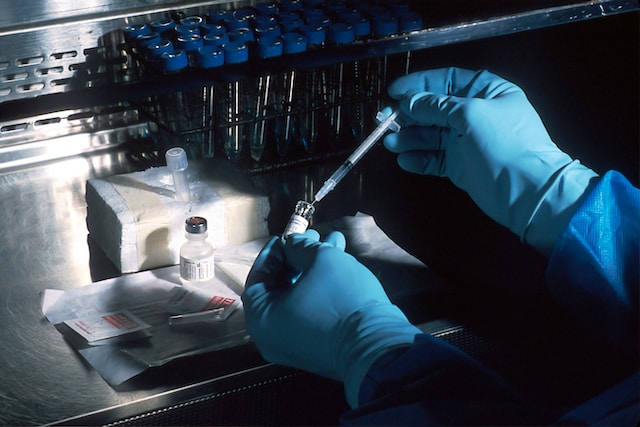Imagine a crime scene where the only evidence left behind is a single strand of hair or a tiny drop of blood. How can investigators use such minuscule clues to solve a case? The answer lies in the fascinating world of forensics, where science meets criminal justice. From fingerprints to ballistics, forensic techniques have helped solve some of the most complex crimes in history. In this blog post, we’ll explore the history and science behind forensics and dive into some famous cases where it played a crucial role in bringing criminals to justice. So put on your detective hats and let’s unravel the mysteries together!
What is forensics?
Forensics refers to the use of scientific methods to investigate and solve criminal cases. It involves collecting, analyzing, and interpreting physical evidence left at the crime scene. Forensic experts can examine anything from hair samples to bullet fragments, using specialized techniques to identify key details that could help solve a case.
One crucial aspect of forensics is understanding how different types of evidence relate to one another. For example, if fingerprints are found on a weapon used in a crime, forensic experts can compare them with prints in a database or collect new ones for analysis.
Another critical element is ensuring that evidence is handled properly so as not to compromise its integrity. This means following strict procedures for collection, storage, and transport of materials from the crime scene.
Forensics plays an essential role in our justice system by providing objective scientific analysis that helps investigators uncover what happened at a given crime scene. By piecing together tiny bits of information through careful examination and interpretation of physical clues left behind by criminals, forensic experts can reveal what really happened – even when suspects have gone to great lengths to cover their tracks!
The history of forensics
The concept of forensics dates back to ancient civilizations, such as the Chinese, who used fingerprints for identification purposes. However, it wasn’t until the 19th century that modern forensic science began to take shape.
In the early days of forensic science, it was primarily focused on determining cause of death and identifying suspects based on physical evidence. In fact, one of the earliest cases where forensic science played a role was in 1784 when John Toms was convicted of murder after being linked to a bloody handprint found at the crime scene.
As technology advanced throughout the years, so did forensic techniques. The development of photography allowed investigators to document crime scenes more accurately while advancements in ballistics helped link weapons to specific crimes.
Perhaps one of the most well-known cases where forensics played a critical role is that of Jack the Ripper. Despite never being caught, this infamous serial killer left behind several pieces of evidence such as bloodstained clothing and letters which have been studied by countless investigators over time.
Today’s state-of-the-art labs utilize cutting-edge technologies like DNA analysis which can identify suspects with incredible accuracy levels. Despite all these advancements though, there is still much work that needs to be done in order for scientists and law enforcement officials alike to stay ahead in solving some truly heinous crimes.
The science of forensics
The science of forensics is an ever-evolving field that combines a variety of scientific disciplines to help solve crimes. Forensic scientists use their knowledge and expertise in areas such as biology, chemistry, physics, and mathematics to analyze evidence collected from crime scenes.
One important aspect of forensic science is the analysis of DNA evidence. By examining DNA samples found at a crime scene or on a victim’s body, forensic analysts can identify suspects or rule out certain individuals. This type of analysis has revolutionized criminal investigations and has been used to exonerate innocent people who were wrongly convicted.
Another key component of forensics is ballistics, which involves the study of firearms and ammunition. By analyzing bullet fragments or shell casings found at a crime scene, investigators can determine what type of gun was used and possibly even link it to a specific suspect.
Forensic toxicology is another important area within the field. Toxicologists examine bodily fluids such as blood or urine for traces of drugs or poisons that may have contributed to a person’s death.
The science behind forensics plays an essential role in solving crimes by providing objective analyses based on sound scientific principles. As new technologies emerge and techniques continue to evolve, we can expect forensic science to become even more effective in helping law enforcement agencies bring criminals to justice.
How forensics is used to solve crimes
Forensics is a crucial tool in solving crimes. It involves the application of scientific knowledge and techniques to analyze evidence found at crime scenes. Through forensics, investigators can link suspects to crimes or exonerate innocent individuals.
One important aspect of forensic science is DNA analysis. By examining blood, hair, or other bodily fluids left at a crime scene, investigators can match DNA samples with potential suspects. This has been instrumental in solving many high-profile cases.
In addition to DNA analysis, ballistics are also an important part of forensics. By analyzing bullets and shell casings found at crime scenes, experts can determine the type of gun used and even trace it back to its owner.
Forensic scientists may also examine fingerprints left behind by perpetrators. These unique patterns are compared to databases in order to identify potential suspects.
Other aspects of forensics include toxicology (the study of drugs and poisons), anthropology (identifying human remains), and digital forensics (analyzing electronic devices).
The use of forensics has revolutionized criminal investigations by providing new ways for law enforcement officials to gather evidence that might otherwise go unnoticed.
Some famous cases where forensics played a role
Forensics has played a crucial role in solving some of the most infamous crimes in history. From serial killers to political assassinations, forensic evidence has helped law enforcement authorities bring criminals to justice.
One such case is that of Ted Bundy, one of America’s most notorious serial killers. In 1979, Bundy was convicted of murdering two women at Florida State University thanks to bite mark evidence found on one victim’s body matching his dental impressions.
Another famous case where forensics played a critical role is the assassination of President John F. Kennedy in 1963. The Warren Commission relied heavily on ballistics analysis and other forensic evidence to conclude that Lee Harvey Oswald acted alone when he shot Kennedy from the sixth floor window of the Texas School Book Depository building.
Forensic evidence also helped solve the murder of Nicole Brown Simpson and Ron Goldman in 1994. DNA found at the crime scene matched that of former NFL player O.
J. Simpson, who was eventually acquitted but later held liable for their deaths in a civil trial.
These cases demonstrate how forensics can provide valuable insights into criminal investigations and lead to successful prosecutions. As technology continues to advance, it’s likely we’ll see even more groundbreaking uses for forensics in solving crimes in the future.
The future of forensics
The future of forensics looks bright and promising as technology continues to advance. One major area that is expected to have a significant impact on forensic science is artificial intelligence (AI). With AI, forensic experts will be able to analyze large amounts of data quickly and accurately.
Another area where we can expect significant improvements in the field of forensics is DNA analysis. With new methods being developed for analyzing DNA evidence, it’s becoming easier than ever before to identify suspects in criminal cases.
Advancements in robotics are also expected to help improve the accuracy and speed at which crime scenes are processed. Robots can be programmed to scan an entire crime scene, collect evidence, and even reconstruct the events that took place leading up to the crime.
In addition, virtual reality simulations may soon become a valuable tool for forensic investigators. These simulations could recreate complex scenarios like car accidents or shootings enabling investigators to determine what happened with greater accuracy.
There’s no doubt that technology will continue playing an important role in forensic science helping law enforcement officials solve crimes more efficiently than ever before.
Conclusion
Forensic science has come a long way since its inception. It is an essential tool in solving crimes and bringing justice to victims and their families. The technological advancements made in this field have revolutionized the way investigations are conducted and evidence is analyzed.
With the continuous development of new techniques, tools, and technologies, it’s safe to say that we’ll see even more breakthroughs in forensics in the future. From DNA analysis to digital forensics, there will always be new skills required for professionals working in this field.
Forensic science plays a crucial role not only in crime-solving but also serves as a reminder that justice can be served through facts rather than assumptions or prejudices. We hope that with our article you’ve gained insight into how science helps solve crimes from fingerprints to ballistics!












